Archive for ‘Notes and Notebooks’ Category
NAPO2014: Notetaking and Pendaflex/TOPS’ FocusNotes™
Notetaking isn’t just about capturing information, but about beating the clock. People can speak at about three words per second, but can handwrite (without shorthand) only 0.3 of a word per second. There’s no way to get it all down with analog notetaking. However, that might be OK, because not everything that gets spoken is worth committing to paper, and as we discussed in the last post on my NAPO214 conference experiment in going paperless, the less you’re able to write down verbatim, the more likely you are to recall and understand what you’ve written.
WHY AND HOW DO YOU TAKE NOTES?
In an academic setting, notes let you record information so that you can learn, reiterate it for an exam, or use it in practical ways. In a work setting, or if you’re on a committee or a board, notetaking is less about learning and more about preserving — who said what, what obligations are to be met by whom, what ideas were brainstormed, etc. And sometimes, we need to take notes to keep ourselves focused so that we don’t lose something in translation — or to emotion — like when a physician is imparting important, or maybe even scary, information or instructions.
To some people, taking notes just means writing down everything you can. So, it might come as a surprise that notetaking is a science, one that has multiple sub-disciplines, and one that can dramatically improve both recall and comprehension.
Some famous and popular notetaking methods include:
- Sentence Method, where each new thought is a separate line, breaking concepts into simple statements
- Mapping, including concept mapping and mind mapping, where individual ideas are illustrated with lines, circles and pictures to indicate their hierarchical or other relationships to one another. It also includes sketching and drawing methods like Sketchnotes, developed by Mike Rhode and illustrated, below, by Los Angeles-based professional organizer Deron Bos.
#sketchnotes from @JoeContrera‘s opening keynote at #NAPO2014 pic.twitter.com/dRNN4wVFhz
— Deron Bos (@bosorganization) May 29, 2014
- Charting, which makes use of tables and graphs, is great for noting facts, like dates, processes and events
- Outlining (with Roman numerals at the highest level, then capital letters, numbers and lowercase letters, all nested and indented) which is more linear than the other methods, but requires having a sense of where the information is going from the very start
- Guided notes, where the presenter provides a written map of the speech or lecture, but with words, phrases or sentences left blank for the note-taker to fill in. This evokes memories of third grade, but is popular on conferences handouts, as well.
One of the most enduring and popular notetaking methods is the Cornell Note Taking System, developed at (my alma mater) Cornell University about sixty years ago by Professor Walter Pauk. He eventually made the method famous in his classic book How To Study in College, to the point that I (and probably many of you) learned the system in high school science classes.
CORNELL NOTES
Cornell Notes is a note-taking as well as a note-organizing method, with the goals of capturing, condensing and enabling review of material.
Each sheet of paper is divided into three sections:
- Notes: A large, lined section running about 3/4 of the width of the page, from the right margin towards the left, for the purpose of recording actual notes, contemporaneous with the lecture or meeting. (It’s a good idea to leave a few blank lines between main ideas for filling in missed details later.) The goal is to capture the main ideas and details presented, with longer/larger concepts paraphrased in the note-taker’s own words. Whenever possible, wordiness is replaced with symbols and abbreviations.
- Cue: A narrow, unlined column running on the left side of the page is used for listing key words or concepts and for developing questions for self-quizzing or further investigation. This should be done as soon as possible after the end of the class or meeting.
- Summary: A broad, lined or unlined section, spanning the width of the page, is for summarizing key concepts, and should be used within 24 hours of taking notes to heighten recall.
Once you’ve learned Cornell Notes, notetaking becomes more systematic and robust. The problem is that it has been fairly difficult to find notebooks that have the sections pre-divided for the user.
At Cornell University, and at other schools that promoted use of the system, notebooks with this layout used to be pretty easy to find (back when I was young and dinosaurs roamed the earth), but are far less available these days. Lifehacker had an extensive post on how to create a Cornell Notes notebook of your own, and there are a variety of sites with templates for Cornell Notes, but that’s a lot of effort. So, I was thrilled to see a new product at the NAPO Expo in Phoenix!
FOCUSNOTES by TOPS™
Pendaflex, newly owned by TOPS, has developed FocusNotes™, a format of notebooks they describe as “Comparable to the Cornell Note Taking System.” Without stepping on any intellectual property toes, they’ve preserved the essentials of the system. Each page is topped with a section for the date and the class or meeting’s purpose, followed by sections for notes, cueing and summarizing.
FocusNotes come in six formats:
- FocusNotes Notebook — This side spiral-bound notebook has 100 sheets of 11″ x 9″ 20 lb. paper.
- FocusNotes Steno Pad — Wirebound at the top, this 6″ x 9″ pad of 80 sheets of 16 lb. paper has a sturdy back cover and is suitable for taking work notes on-location or classroom notes in a lab or otherwise on-the-go.
 FocusNotes LegalPad — Bound at the top, each 50-sheet pad of 16 lb. 8 1/2″ x 11 3/4″ paper is perfect for left-handed note-takers. A sturdy back cover works well when you have to take notes on-the-go (or on your lap).
FocusNotes LegalPad — Bound at the top, each 50-sheet pad of 16 lb. 8 1/2″ x 11 3/4″ paper is perfect for left-handed note-takers. A sturdy back cover works well when you have to take notes on-the-go (or on your lap).
- FocusNotes Jr. Size Legal Pad — This 5″ x 8″ notebook has 50 sheets and a sturdy back cover, like the full-size version, and is also made of 16 lb. paper.
- FocusNotes Composition Book — This 80-page update on the classic gives you the feel of a traditional composition notebook with a Cornell Notes-ready format and 80 sheets of 9 3/4″ x 7 1/2″ paper.
- FocusNotes Filler Paper — For those who prefer to keep their notes in binders, this loose-leaf, 3-hole-punched, 8 1/2″ x 11″ stack comes 100 sheets to a pack of 20 lb. paper.
Prices range from about $3-$9 per notebook/filler set, and FocusNotes can be found at Amazon and office supply stores.
This (silent) video illustrates FocusNotes in action:
For more on the Cornell Notes method, consider reviewing:
- The Cornell Learning Strategies Center’s “cheat sheet” on Cornell Notes
- Video on the 5 Rs (Record, Reduce, Recite, Reflect, and Review) for academic use of the system
- Writer’s Bloc‘s post on How To Use the Cornell Note Taking System Effectively for Business or Client Meetings (Note: Writer’s Bloc formats the page atypically, flipping the left and right sections, which may be helpful for left-handed note-takers.
NOTETAKING SYMBOLS
To speedily take handwritten notes, it helps to have some shortcuts in mind. For Paper Doll, it’s a hodge-podge of triangles (the Greek letter Delta (Δ) means “change”), asterisks (for “vital follow-up!”) and arrows (–> to me, means “leads to” or “causes”).
A blog called The Cramped “is a site dedicated to the pleasures of writing with analog tools.” Their recent piece on paper-based markup language might be a good place to start if you want to develop your own shorthand for using Cornell Notes or any other handwritten system.
So, how do you take notes?
It’s a Notebook! It’s a Whiteboard!: 3 Dry-Erase Notebook Innovations
With traditional notebooks, even the ones with twists like we’ve examined in the last few posts (for lefties and customizers), we’re dealing with an expectation of some kind of permanence. But what about the times when we need notebooks to let us create, change, recreate, erase, and start all over again — without destroying the environment? Yes, I know that pretty much sounds like a computer, rather than a notebook (or at least an Etch-a-Sketch), but sometimes you need a new way to organize your visions and ideas as they change.
In just the past few months, we’ve seen an upsurge in a new kind of alternative notebook: a dry-erase notebook!
A dry-erase notebook is yet another hybrid solution with specific qualities to suit all possible needs. It must be:
- Erasable like a whiteboard.
- Permanent like a notebook — but only when you want it to be, because sometimes you need to fix mistakes or make revisions. (But it also can’t erase so easily, and unintentionally, that when you casually rub against it, your million dollar doodles become a blur.)
- Portable like a notebook, because whiteboards are great when they stay in one place, but unwieldy to take on the subway or even fit in a backpack.
I’ve found three options that seem to fit the bill, and all come from upstart companies with ingenuity and social backing rather than large corporations. Today, we’ll be looking at Wipebook 2.0, Writerase and Letterforms.
WIPEBOOK 2.0
One big name in dry-erase notebooks is Wipebook, or to be exact, their improved Wipebook 2.0. Canadian student/inventor Frank Bouchard and his team had a goal of $4000 to get the next iteration of his Kickstarter notebook some essential working capital. By campaign’s end in December, $424,314 was raised!
The various iterations of Wipebook 2.0 all come in one standard size, with 25 (double-sided, coated) sheets of 8 1/2″ x 11″ pages bound together with a plastic spiral coil, which allows the notebook to lay flat. The basic notebook with lined pages is $29.99. For notebooks with blank, grid (like graph paper), mixed or music sheets, the notebook is $34.99. You can also get a customized Wipebook for $75.
Playing it close to the vest with company secrets, as do its competitors, Wipebook will only say that it uses a “patent pending glossing process resulting in an enhanced writing and erasing experience.”
Although the Wipebook works well with all types of dry-erase pens, the preferred writing/drawing instrument (and what Wipebook sells) are fine-tip dry-erase Lumocolor Correctables (singles, black, for $2.89, and four-marker variety packs, with red, blue, green and black, for $11.99).
To get a sense of the Wipebook 2.0 in action, let’s hear from Bouchard and his team:
When we’re talking about keeping the contents of a dry-erase notebook long-term, there’s permanent and then there’s permanent. Eventually, when a project is complete and you’re ready to move on, it would be nice to have a permanent copy of the information or illustrations while being able to wipe the (notebook) slate clean.
A logical solution would be to scan the contents, but might the glossy nature of the paper (or the impermanence of dry-erase ink) make scanning a deal-breaker? Wipebook’s creators anticipated this question, and even created a little video to show how easily Wipebook 2.0 accommodates scanning.
Quick & easy-peasy? Well, yes, except for the part about having to remove the spiral binding (which looked simple enough, but we never did see the Wipebook 2.0 getting re-assembled)!
WRITERASE
Writerase is another dry-erase notebook that began life as a Kickstarter campaign — in fact, as this goes to press, the campaign has a little over 24 hours to go and has already raised over $29,000 towards a $6500 goal. It wasn’t as passionately funded as Wipebook, but it definitely surpassed the initial expectations of the four-man Canadian engineering team. (What’s with these Canadians and their desire to save the environment and provide options for both permanence and a clean slate?)
Each of the four Leaf-themed Writerase notebook in their collection (which they call a “forest”) has 54 pages, including 25 (double-sided) thin, resilient sheets of white paper with dry-erase coating plus two sheets of transparencies. (The transparencies are so that you can create a semi-permanent template page, like a calendar, and then modify and erase only the overlaying transparency.) The notebooks have a double-loop (Wire-O) metal binding, allowing the notebook lay flat when open.
The Writerase Leafs (I’d say “Leaves” but it seems rude to quibble with those nice Canadians) include the following formats:
Bonsai Leaf: 3“ x 5″ (index card size)
Oak Leaf: 5″ x 8″
Maple Leaf: 8″ x 11″
Banana Leaf: 11″ x 17″
There are three paper style choices: college-ruled notebook paper, 1/4″ gridded graph paper, and blank paper (suitable for writing or drawing).
The notebooks are designed to be used with the same dry-erase, non-permanent markers one uses with overhead projector transparencies. (Remember those from math class?) Each notebook comes with one pen eraser suitable for use with standard dry-erase pens, but you can also erase a page with a wet paper towel.
The Writerase team reports using a UV-gloss spray technique on high-quality paper for achieving a dry-erase notebook that is water resistant (meaning the paper won’t be damaged or dry “crinkly” — though of course the ink will still be water soluble) and can be cleanly erased without streaks. They promise an “incredibly smooth writing experience.”
The Writerase Kickstarter campaign will be over tomorrow, but you can still catch the video that got it started:
Writerase’s video page illustrates use with different dry-erase pens (as with Wipebook, Staedtler Lumocolor non-permanent markers are considered the best option), shares the paper quality and water-resistance tests that led to final product selections, shows how kids can use the notebooks, and more.
LETTTERFORMS
Although our neighbors to the north might seemed to have cornered the market on dry-erase notebooks, a Fremont, California-based company entered the fray with the successful Letterforms Kickstarter campaign that ended last month having raised $107,777 towards an $8000 goal. (Do you get the sense that even if Big Paper isn’t immediately seeing the need for dry-erase notebooks, the consumers of North America aren’t going to wait?)
Web developer-turned-designer Venkat Yuvaraj originally focused on creating a washable notebook, but with backer feedback from his first Kickstarter campaign, he came around to a dry-erase format.
Each Letterforms Dry Erase kit comes with one 8″ x 10″ dry-erase notebook bound with plastic-covered coil-style spiral binding and two fine-tip Staedtler Lumocolor correctable markers (one red, one black, with erasers on the non-functional ends). Every notebook contains twenty (double-sided, coated) sheets. While only standard blank and dot-gridded notebooks at this “classic” size were part of the original run, Letterforms created “stretch bonus rewards” for the campaign, including an 8″ x 5″ mini-notebook and a 6″ x 4″ passport-sized notebook, both of which could be added to the product line after the funded campaign is fully shipped this month.
Yuvaraj notes that while the Staedtler markers are included, the notebooks support all dry-erase markers as well as wet-erase, washable and permanent stains, removable with a wet cloth, and promises no ghosting, even after many months of use.
Pricing for the post-Kickstarter period is not described on the website, but the initial pricing for a basic kit was set at $25.
Letterforms’ Kickstarter page includes a number of videos testing how the notebook holds up under a variety of treatments with different pens, smudge attempts, masking tape attacks and more. Indeed, if you’re interested in seeing how inventors get to the point that they can share their products with the public, Yuvaraj is an open book (no pun intended). See the Kickstarter campaign video:
For scientists and mathematicians, musicians and composers, poets and cartoonists, a dry-erase notebook offers a novel way to organize deep thoughts and creations through successive versions. Brainstorming, studying, calculating and engineering, technical drawing, room design, graphic design, and a wicked game of Hangman or Tick-Tack-Toe — all are suitable for dry-erase notebooks.
Do it, doctor it, destroy it, and start all over again without undue deforestation and with ultimate portability.
Dry-erase notebooks are a nifty concept, but as Paper Doll HQ didn’t get to try any of these products first-hand, it may be a while before we have a final verdict. It seems that Writerase has the greatest variety in terms of notebook sizes, while Wipebook 2.0 allows for more customization (albeit at higher prices). Letterforms has slightly fewer pages, but includes two pens in the package cost. All are fairly secretive (and understandably so) about their secret formulas for making slippery, slide-y, write-on-able, wipe-off-able page surfaces. And I’d like each company to provide options for adding section dividers to better organize notebook contents without having to add third-party tape flags or tabs. (Perhaps these companies need to get together with the makers of the customizable notebooks we’ve discussed recently.)
What do you think? Would you use a dry-erase notebook? Please share your thoughts in the comments.
Customizable Notebooks: Have It Your Way…Sorta
As we’ve discussed previously, the key to any notebook system is that it fits your individual needs. What could be better than a notebook that you can customize to your specific sense of order?
In the beginning, there was Levenger’s Circa System. The backbone of Circa Notebooks appears to be rings — but instead of three fixed rings inside the spine of a binder, Circa uses discs (11 for letter-sized, 8 for junior-sized notebooks) to hold together a series of component elements: leather and other stylish covers, ink-friendly paper, tab dividers of various types, calendars and more. The discs come in a variety of sizes, from 1/4″ to 3″, and styles from basic black to designer-level sparkly, allowing you to increase the thickness and fashionability of your notebooks by switching out the discs.
Instead of using a standard hole-punch that creates a series of circles, Levenger designed a specialized punch style (where each “hole” punch looks like a sideways mushroom or umbrella) such that elements can be switched out without tearing the paper edges. This style has been copied, with a little variation by the competition:
Want your calendar in the front and your notes in the back? Decide tomorrow you want to switch it around? Circa can do that. The Circa System is modular, classy and elegant, but oh-so pricey. Notebook covers range from $60 to $150; the discs, which are sold separately from the covers run $12-$25. Refill pages start at $10 for a set, and if you want to keep any of your own papers, the specialized hole punches range from $30 to $80.
Two years ago, Staples brought out an almost identical notebook style, the Arc System, which I reviewed in my NAPO EXPO 2012 Recap. Arc has the same system of discs (though fewer sizes, and with a less glossy, more utilitarian styling), fewer but still multiple cover options (leather and poly, decorative and solid) and a variety of productivity accessories. Sort the pages to your preference, change them around as necessary, and switch your cover when you move from classroom to internship to boardroom.
The main difference between Circa and Arc was Arc’s more frugal pricing structure, with covers ranging from $12 for poly to $25 for leather; disc expansion packs are only about $3, and plastic/poly dividers and pockets range from $3-$10. Pre-punched notebook, planner and graph paper sets runs $3.50-$4.50, and a specialized punch is $43.
Then just last spring, we talked about the Ampad Versa Crossover, yet another entry into the discs-instead-of-rings customizable notebook arena. As I described it then:
The key to the Versa Crossover Notebook’s appeal, however, is that the paper — indeed, all elements of the notebook, including the covers, flaps, flags, task pads, pockets and dividers — can be re-positioned anywhere in the notebook. That’s because instead of being attached by spiral wires, everything is held in place by the discs nestled perfectly inside uniquely shaped oval “tabby things.”
Same basics, but the Versa has thicker, chubbier discs (like Duplo vs. Lego) and a variety of poly-based elements for creating dividers and holding accessory items. At $12-$17 for the basic notebook and about $3 for refill pages, the pricing is fine, but there’s no hole punch for your own papers, and the types of pages are very limited (to wide-ruled or graph paper).
All three notebooks are spiffy, but I felt like Arc offered the best deal for the money for the average user. Recently, however, a client called my attention to a newcomer in customizable notebooks that’s sorta like Circa, Arc, and the Versa Crossover, but sorta like nothing we’ve seen before.
It’s YoonCo’s Sorta, the Adaptive Notebinder.
If Circa is for executives, Versa is for students and Arc is for just about everyone, Sorta is for the person who says, “Well, I’m sorta doing the entrepreneurial thing during the week, and I’m sorta working on my tunes in the evenings.” It’s for someone who doesn’t necessarily see himself carrying a fine calfskin planner or a paisley-print poly cover. It’s for someone who wants a notebook that’s sorta cool for all the ways he or she “sorta” is.
The Sorta is customizable and has removable, repositionable pages. But there are no discs and no rings, and the page/element options have been created by designers rather than productivity or office supply experts.
To add, remove or rearrange any of the paper elements in your Sorta, bend back the front and rear covers all the way, and the papers “unpinch” from the springback spine of the notebinder. Toss or archive what you remove, and then sort your papers in a stack. Move your graph paper to the front and your sheet music to the back, change out the style of calendar in the middle — and then bend those covers backward, slide your stack of papers back in, and you’re good to go!
There are two basic elements to the Sorta: the outer notebinder and the varying stationery templates.
To see how it all fits together:
Notebinders — The notebinders come in three styles:
- Original ($15.95), which is sort of the reclaimed wood of notebooks, gritty (and hearty) recycled chipboard with accent color choices of black, red, yellow, blue and white;
- Cloth ($23.95) in black, blue, grey and orange; and
- Leatherette ($28.95) in pebbled black
Each notebinder is 6 1/4″ x 8 1/2″ and features one thick, color-coded elastic band for closure and two thin ones for bookmarks. (The bands are standard in the original version and optional for the cloth and leatherette covers.)
Stationery/Templates — Here’s where Sorta wins me over. There’s a huge variety of paper inserts and designs, and they are all kind of quirky. The ink is blue — and none of that stuffy navy or royal blue ink, either. It’s sort of a dark turquoise.
- Calendars — Three one-day day “glance” styles with increasing detail for the Full-timer, Insomniac and Moonlighter, one-week glance in two styles, two-week glance and one month glance. (Note, these are evergreens — you fill in the date on each page type.) They’ve also designed some Sing Another Song planners, based on the notion that, “Let’s be honest—no one can realistically plan ahead past two days. This planning system (named after a Leonard Cohen lyric) acknowledges this reality, forcing you to focus on what you need to do today and tomorrow only. Everything else is backburner.“
- Forms — Contacts, Expenses, To Do lists, Time-tracking sheets, Recurring checklists
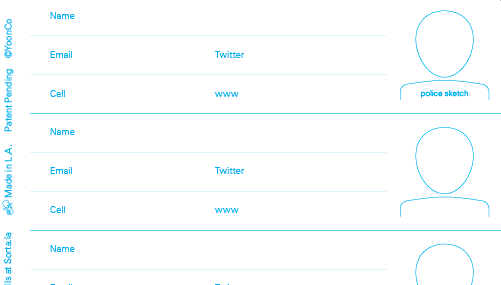
- Notepaper — Traditional-ruled, “fat” and “skinny” ruled, “dot grid” (like graph paper without the lines), traditional graph, and isometric graph for 3D design
- Art and Music — Sheet music, ukulele chords, penmanship charts, Kanji (Japanese writing) practice paper, unlined and watercolor-suitable paper, and drawing-a-day pages for two-, three- or six-doodle panels, in case you’re a budding cartoonist or just like to think visually.

- Dividers — each divider is white for the left and center two-third and dreamily colored (blue, green, yellow and pink) for the right third of the page.
Most of the paper elements range from $3.49 to $4.49 for a packet of 25 sheets, with the drawing pages priced at $5.59. The dividers are $2.49 for three in any one color, and $3.29 for a variety pack of four.
A word on design: Sorta’s aim is to be goofily cool. Unlike the attractive but fairly boring traditional notebook stylings of the three leaders in customizable notebooks, the key to Sorta’s style is that it’s not at all corporate, and not coming from a single corporate direction. There are currently five design companies from around the US, in addition to YoonCo, contributing to the Sorta elements, including Barrel Strength Design, Machine Design Company, Ditherdog, Patrick M. Coyle and Monkey Show. (If you’re a designer, consider joining the Sorta design team.)
So, what’s missing? Huge expansion possibilities. The Sorta only holds 40-60 sheets of paper at a time, so it’s better for carrying around just what you really want and need and taking advantage of the easy-to-remove-pages aspect. Also, there are no rulers, no plastic sheets with sticky notes and tape flags, and no poly pocket inserts for digital media or business cards. It’s all paper (and, well, cloth, leatherette and elastic) and the lowest of low-tech. But there’s something sorta nice about that.
What do you think of the Sorta? What kind of customizable notebook is your speed?
Organize Your Writing Right — With Left-Handed Notebooks
Are you a righty or a lefty? Of course, we’re not talking politics, but handedness. Paper Doll is a righty, but I’m always on the lookout for solutions that make it easier for my left-handed clients to live in a right-handed world.
With file folders, it’s easy enough — it’s just a matter of turning the papers upside down (from my perspective) so that when my clients open their folders (book-style), the tabbed side of the folder is on the left rather than on the right. However, notebooks present a particularly smudgy, and occasionally painful, problem.
Lefties may use their left hands, but assuming they aren’t writing in Hebrew (aha! a clue to a possible solution?), they are still writing from left to right like the rest of us. With typical sheets of paper or notebooks, this means that the left hand often slides or drags over the most recently written material, causing smudges.
Moreover, when writing in a three-ring binder, we righties are can generally keep our bodies entirely to the right of the rings; for a lefty, writing on paper while it’s ring-bound means keeping the wrist tightly bent to keep the forearm away from the rings. (The Handedness Research Institute warns that this is a no-no.) The problem is pretty much the same for spiral notebooks, earning wiry indentations in the hand and arm. How exhausting must this be for our friends on the left?
TOP-BOUND ALTERNATIVES
The easiest solution for left-handers is to use spiral (and other) notebooks wire-bound at the top rather than on the side. Steno pads are fairly good solutions for casual use, provided you’re not distracted by the vertical line down the center (used to guide shorthand).
Mead even promotes their top-bound spiral notebooks for academic and business use as “left handed notebooks.” While these, as well as legal pads and reporter’s notebooks on the low end of the price/quality spectrum, are easy to find, this often condemns left-handed writers to a sort of second-class status.
That said, there are a few upscale top-bound, non-spiral notebooks, including the Moleskine Reporter notebooks (available in black, only). They come in two sizes, Pocket (3 1/2″ x 5 1/2″, 192 pages), suitable for students and others on-the-go, and Large (5″ x 8 1/4″, 240 pages), which work well for professionals.
The Reporter notebooks come in hard and soft (lay-flat) cover options, with acid-free paper choices including ruled, graph (“squared”) or plain pages, and top-stitched bindings. Each have 24 detachable (perforated) pages at the back for quick, removable notes, and all of the Reporter-style notebooks can be used both horizontally and/or vertically (though obviously this works better with graph and plain pages than ruled). Reporter notebooks also have expandable accordion pockets inside the back cover and the traditional Moleskine elastic bands to keep things private. The notebooks range from about $11 to $16 at Amazon, Moleskine, LoveNotebooks.com and fine stationers.
NO STUDENT LEFT BEHIND
Flip-top covers aren’t to everyone’s tastes, however.
Certainly, the left-handed writer can simply flip every spiral-bound notebook to the back and choose to write only on the left (reverse) page of each sheet, but this generally subjects users to being greeted repeatedly by a “plain” cardboard or chip-board backing (uh…fronting?). While righties get their pick of the pretty notebooks out there, lefties are left showing their backsides, as it were, price tags and barcodes and all.
Here, at least, the open market for student notebooks has been responsive. I’ve found a number of right-side spiral notebooks designed specifically for left-handed users.
Ampad makes a cheery (OK, perhaps garish), yellow, 80-sheet, 8 1/2″ x 11″ Left Handed Subject Notebook with the spiral on the right side. Find one for around $3.49 through specialty stores like Gonzaga University’s Zag Shop.
Less well-known stationers are also entering the arena. Roaring Spring makes a 9″ x 11″, 100-sheet, 1-Subject Wirebound Notebook that runs upward from $2.89 at Shoplet and (at an inexplicably higher price) Amazon. The Lefty logo is a cute touch, and the notebook comes in maroon, cobalt, dark green and grey.
TOPS similarly makes a 9″ x 11″ narrow-ruled 80-sheet spiral-bound notebook with cover colors in red, blue, yellow and green. Available from Amazon and office supply stores, prices range from $3.35 to over $9.
All of these notebooks are suitable for students, but wouldn’t exactly be the right fit for a lefty with style.
HIPSTER STYLINGS
Hipsters usually like the Moleskine look, but if your “Too Cool for School” lefty prefers a grittier, Old School look, Baltimore-based Write Notepads & Co.Write Notepads & Co.
manufactures a notebook specifically for left-handers that might fit the bill.
The covers are made from a heavy-duty kraft card stock with brass, twin-loop, spiral rings on the right side. The standard righty version is imprinted with Write Notepad’s regular logo, but the lefty line is imprinted with the likeness of Paul South. (Get it? Say it aloud, sort of drawling. Paul South…for South-paws?)
The notebooks come in two sizes, a 3 1/2″ x 5 1/2″ pocket size (just a touch bigger than index cards) and a larger 5 1/2“ x 8 1/2” version. Each notebook has 120 sheets of paper, and the company notes that the paper is “fountain-pen friendly.“ Both include a Write Notepads & Co.-printed, oversized elastic to hold the book closed, for those who want their left-leaning thoughts kept private. Both sizes are available with either blank or ruled paper, and range from $8 for the smaller notebook and $16 for a larger one.
(If you prefer their traditional “righty” version, note that the bands are white rather than red.)
AMBIDEXTROUSLY ELEGANT
Paper Doll‘s diligent research team came up empty-handed (on the right and the left) with regard to executive-quality notebooks for left-handed writers. However, Levenger’s leather Ambi-Folio does offer a nice touch for keeping up with handwritten and digital work, no matter which hand you favor.
The smooth 10 1/4″ x 13″ full-grain leather portfolio comes in black, red and saddle (a rich brown) and has sections for a top-bound writing pad as well as a tablet or e-reader.
A Levenger notepad is included, and there are right-sized pockets for loose papers, business cards, index cards, and pens (on either side, accommodating lefties and rights). A zippered closure keeps everything safe. The whole arrangement can be flipped to reverse the set up and put your writing pad on the left or right, as is preferred.
SPECIALTY STORES
Aside from the products above, another alternative is to shop online at left-handed specialty stores like Lefty’s, which carries college- and wide-ruled academic, art and speciality notebooks.
And what of Hebrew notebooks, to which I alluded earlier? I suspected that I might find quite a few international versions of notebooks designed specifically for languages written right to left. Sadly, I didn’t have a lot of luck besides elementary school notebooks. Thus, the search continues.
Scientific American reports that approximately 15% of people are left-handed. You’d think in a consumer-driven society, more office supply companies would be developing solution-oriented goodies. If you have any great sources for attractive left-friendly notebooks, please share in the comments section.
5 Key Points for Organizing With Notebooks
A notebook is a notebook is a notebook. Or is it? The truth is, not all notebooks are created equally.
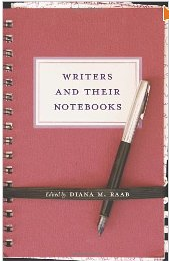
Notebooks seem like they should be pretty simple. At the heart, they are little books (or pads) of paper that allow us to take notes (or draw, or map). Of course, our notes may not be handwritten, so if our notes are digital, our notebooks must live in cyberspace, too. But there’s more to it than that.
Over the next few posts, we’re going to be looking at some new approaches to notebooks, making it a good time to review five noteworthy concepts related to organizing thoughts and information and making notetaking make sense. Bear in mind the following:
1) You can’t remember everything. The space in your brain is finite. It’s a common myth that most of us rarely use more than 10% of our brains. I’m not a neuroscientist, but I do know that our brains can’t maintain an unlimited amount of information and make it all equally accessible when and how we want it.
Simply put, you can’t think about things in-depth and with context if you’re constantly trying to remember to think of them.
Keeping a notebook doesn’t just enhance your memory; it sharpens your focus. When you merely listen to the world (whether the outside world or your own interior world), it’s easy to be passive. However, keeping notes turns listening into an active experience. The mere act of writing something forces you to put effort into comprehension.
Finally, once the general fact of something is written down (and temporarily stored), your brain can focus on analysis, processing and planning.
2) Loose notes don’t work. One of the ultimate, classic Paper Doll posts was Stay Far From Floozies: Avoiding the Loose Paper Trap. In organizing, we often talk about having a landing strip where we unload all the detritus of the day to ensure that phones get charged and keys remain accessible. (In the morning, the process is reversed and the landing strip becomes a launch pad, loaded with whatever essentials are needed to launch you out the door for a successful and organized day.)
If we skip the landing strip and just drop things wherever we let go of them, we’re dependent upon our eyes or memories for finding them again, slowing down the retrieval process. Having a notebook, one central location for incoming stimuli, is similarly a safer bet than letting notes “drop” on the backs of envelopes, the corners of napkins and the palm of your hand.
3) It’s not really about the notebook — it’s about you. As a professional organizer, I’ve found that the most significant reason a system works or does not, whether it’s for notetaking or calendaring or task management (or laundry or workflow or meal planning), has far less to do with the system used and far more to do with the user.
If an organizing system, or even the containers for your organizing system, do not fit your personal style, whether in terms of aesthetics, format or method of function, you’re going to find excuses to avoid using your system, and you’ll go back to whatever you used before, even if it failed you miserably.
(If going by gut instinct worked, we’d never seek outside help in the first place. Remember, if you always do what you’ve always done, you’ll always get what you always got!)
In Notions On Notebooks: Organize Your Paper Picks, we talked about how price and branding, binding, paper quality, lines, and color all determine whether a paper notebook format will be right for you. Reviewing that post will help you think about what notebook features will help you commit to a notetaking system.
4) The platform isn’t the same as the system. When we talk about notebooks, we tend to interchange the two, but they are very different. The platform is the physical (or digital) rendition of what tools we choose for organizing. At your house, you may store items in drawers, cabinets and lidded tubs, but that’s not an organizing system. Notebooks, like drawers, are containers. They serve a function for supporting an organizing system, but they are not the system, per se.
In the past, we’ve talked about a wide variety of notebook platforms, from environmentally-friendly notebooks (Green-Eyed But Not-So-Monstrous) to hybrid digital/paper notebooks (An Organized Hybrid: The Evernote Smart Notebook By Moleskine, From Paper to the Cloud: Ampad Shot Note) to adjustable notebooks (Presto, Change-o! Shape-shifting Organizing Products #2), and even waterproof notebooks (Paper Doll Writes Between the Raindrops: Waterproof Notebooks).
Whatever format or platform you use for a notebook, recognize that while the platform has to inspire your loyalty, it will only get you so far.
5) A notebook is only as good as the system you use for processing the information you put into it. Notebooks tend to exist for three disparate but sometimes interlocking purposes:
- Creating (journaling, sketching, designing) — What you put in these notebooks may not need to be tracked or managed. Just having a place to put your creations is often enough. However, if you are prolific, and retrieval of the product of your brilliance is an issue, you may want or need an indexing system for tracking what you’ve created.
This could be as simple as numbering your pages keeping a blank page at the front of your notebook for listing what you’ve designed or written. You might want to take a page (pardon the pun) out of philosopher John Locke’s approach to indexing commonplace books.
- Capturing (academic notes, business meeting notes, committee notes) — Once you capture essential information, you are generally asked to process it. The notes you take in your European history course may require you to capture fine detail regarding causes of wars or dates of battles so that you can memorize and regurgitate information. Conversely, notes captured in a client meeting might be the jumping off point for creating something new (an ad campaign, a solution to a problem, a product or service).
If you’re a student, to make sure you’ve got command of the subject, consider the Cornell Notetaking System (which is actually a system for learning and studying and not merely taking notes).
I was introduced to this process as a high schooler, long before I actually attended Cornell University, and it’s so useful, it’s really worthy of its own post. (Lifehacker has an excellent classic post on the Cornell system.)
For keeping up with business or other reading, you might prefer charting, outlining or mapping related concepts.
- Productivity (tasks) — If your notebook is designed to help you amass everything you need to do, rather than everything you need to know, you’ll need to find a workflow that makes sense for your life before you try to pick a snazzy notebook. A few systems that have enjoyed popularity in recent years include:
Bullet Journal — This method was covered in detail last year in Lifehacker’s The Bullet Journal Productivity Method Empowers Your Paper Notebook.
The AutoFocus System devised by time management expert Mark Forster. I’ve always thought my colleague Janine Adams, a Forster devotée, has done an excellent job explaining each iteration of the AutoFocus method. (The newest version of this system is called FinalVersion.)
So, I hope we’re clear that depending on memory or a series of fluttering scraps of paper is no way to master the information in your life. Notebooks can be excellent tools for organizing thoughts, but recognize that success depends on knowing yourself and your aesthetic deal-breakers, and employing information capturing and indexing systems that will keep you sticking to your system long into the future.
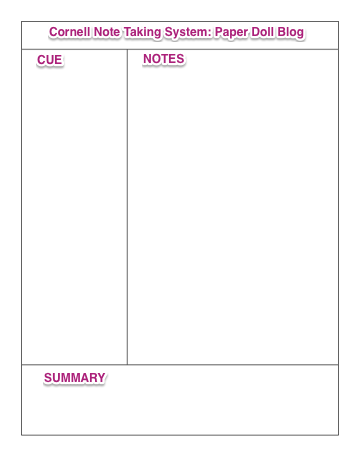

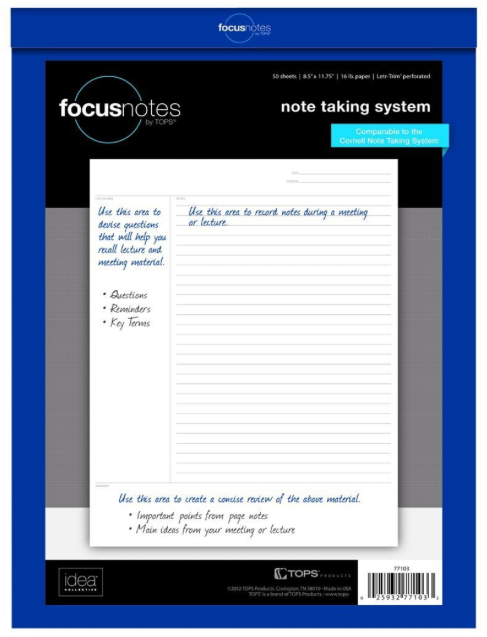

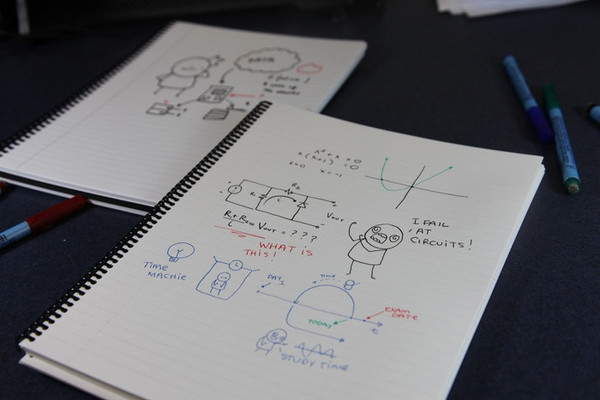
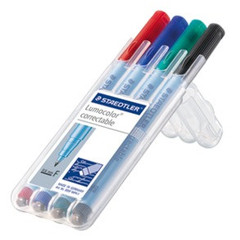
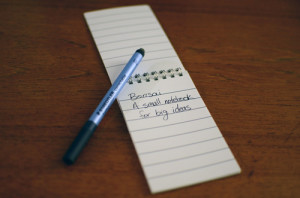

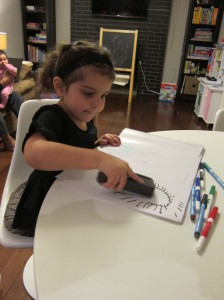
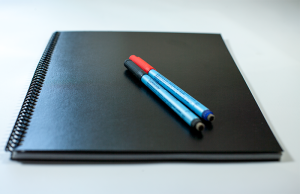

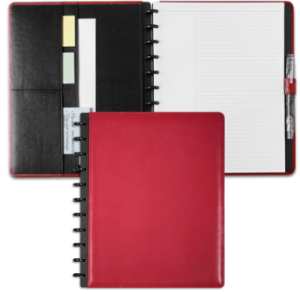
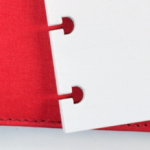

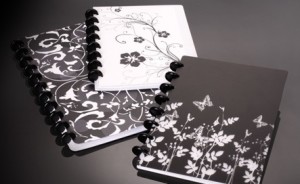
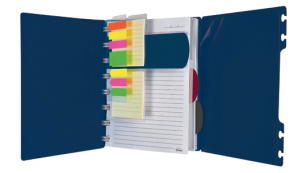
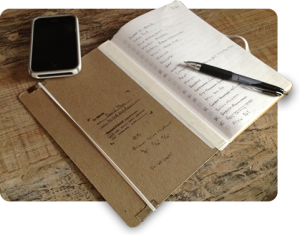

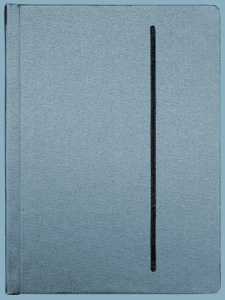
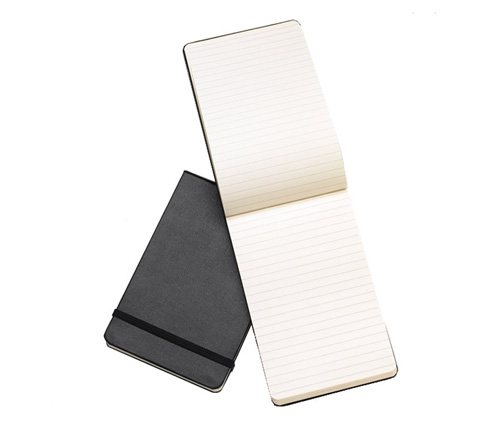


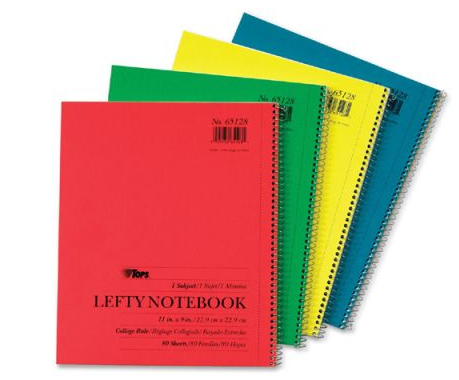
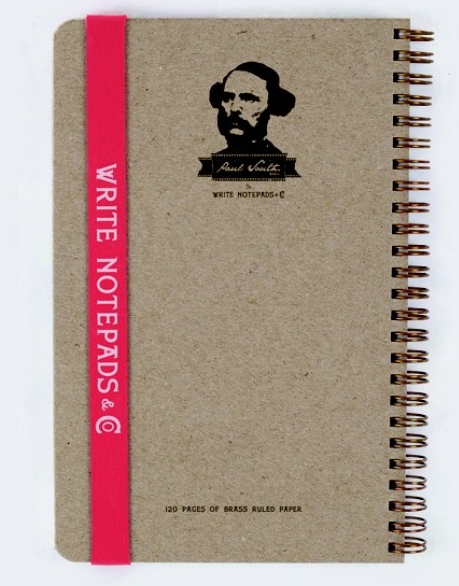

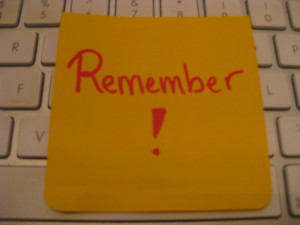
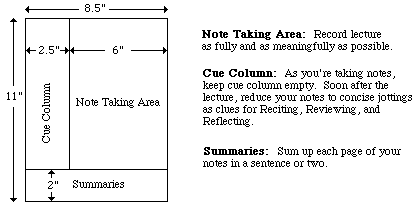



Follow Me